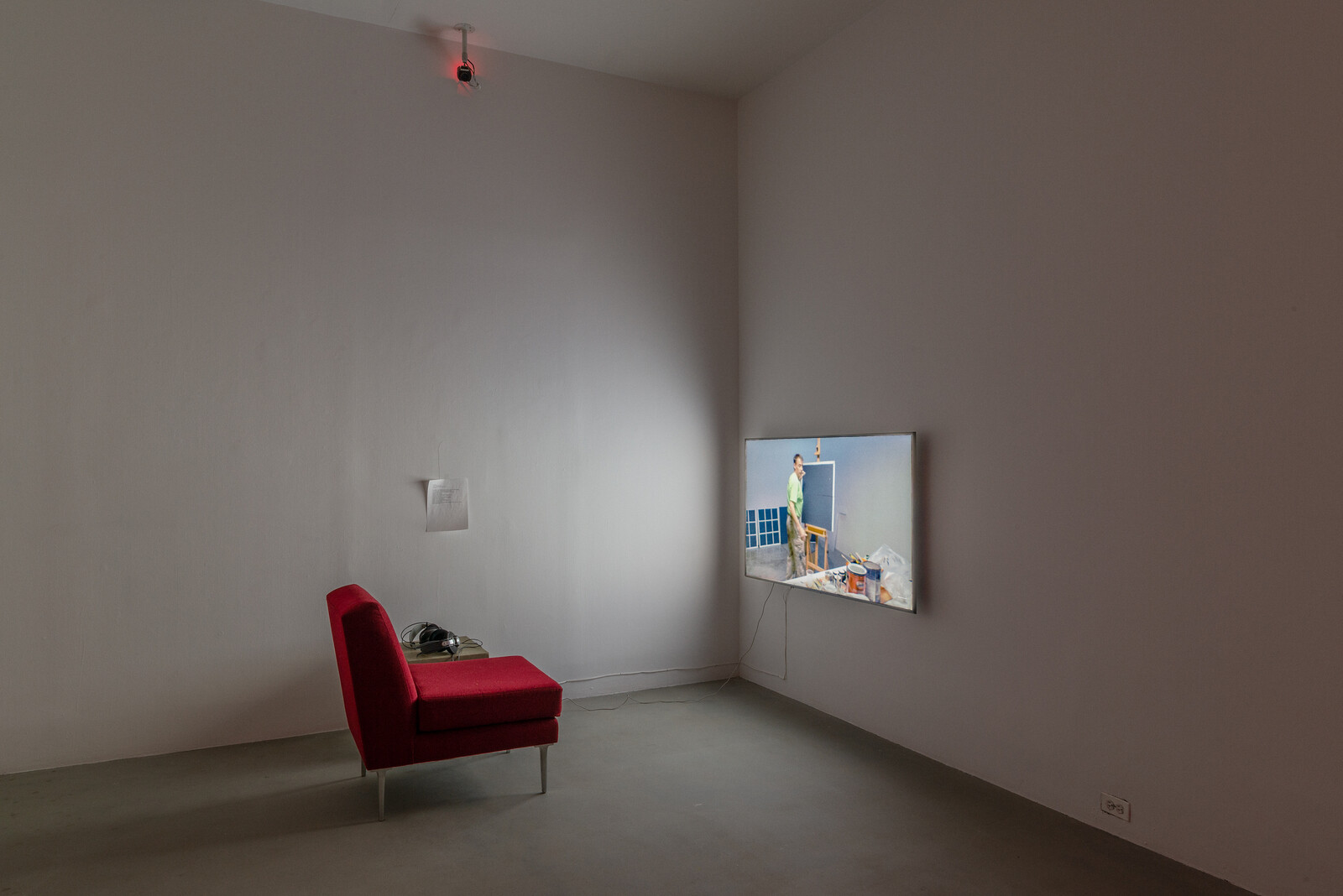The ambiguity of Jason Hirata’s exhibition title speaks to his ambidexterity as artist and videographer, two roles that fold into one another in this show. Hirata produces videos for artists, as well as documenting live events and providing technical assistance, and this exhibition presents six videos he has worked on. The precise nature of his labor, however, remains oblique or uncredited, the exception being Hito Steyerl’s 2018 video Unbroken Windows (a piece of paper sellotaped to the wall lists Hirata as production manager and director of photography).
“Sometimes You’re Both” continues Hirata’s recent practice of deconstructing the solo show. For his “25 October, 2015—12 May, 2019” exhibition at Kunstverein Nürnberg in 2019, he exhibited other artists’ work under his own name. Similarly, “Sometimes You’re Both” is neither strictly artist-curated nor collaboratively billed. More liberty is taken here with the display of works than in “25 October, 2015—12 May, 2019”: technical equipment sits out in the open on tabletops. While this could be mistaken for slacker aesthetics, it’s rather another instance of the artist divulging the mechanics of artistic production—or, perhaps more specifically, the invisible labor behind installation. Films play from laptop to projector in a visible circulatory system. The presentation is also an economy of means: fire exit signs light the space, couch chairs from a previous show provide the seating. In parallel, Hirata’s contribution to a group show held at the nearby Artists Space is an installation of surplus projectors from 80WSE’s inventory.
Hirata incorporates a third component of his employment—occasional audiovisual hire at 80WSE—by synchronizing the sound of all six works. The exhibition is front-ended by two video works, Carissa Rodriguez’s The Girls (1997–2018) and Hannah Black’s 2019 Ramey and Raymond (80WSE edit); audio from these pieces, and from three documented performances and readings, overlap between interlocking gallery rooms in which more machinery is on show. A familiar screensaver plays endlessly on a desktop computer in one corner, while a modem and speaker are the lone occupants of another.
Thematically speaking, the content of the works grouped together here is somewhat unrelated—it’s Hirata’s involvement that connects them. Almost all feature other people as, or as a conduit for, their principal subject, from the artist Chris Toepfer (founder of The Neighborhood Foundation) in Steyerl’s work, to Rodriguez’s long-distance Hi8 footage of children in a playground. But it is Black’s film—another version of which is concurrently included in her show at Kunstverein Braunschweig—that appears most in sync with Hirata’s project. In this edit, the artist switches between interviews with Raymond Pinto, a performer in the Broadway production of The Phantom of the Opera, and Ramey Ward, daughter of film editor Dede Allen. At one point, describing her late mother’s style, Ward suggests that “You would never overlap sound. She was the first to do that.” Her words chime with the layout of the exhibition, characterized by its sound-bleed “from one scene to the next.” Calling forth narrative devices and techniques from theatre and cinema, Hirata’s configuration of films within the exhibition might also be thought of as a way of moving from one space to the next.
Hirata’s work asks where one person’s artistic practice ends and another’s begins. This question is most apparent in the three videos he made for events that took place at Artists Space in 2017: a poetry reading by Adjua Gargi Nzinga Greaves, and performances by New Red Order and Trajal Harrell. To show such recordings by proxy interrogates their very purpose and deepens an understanding of what it might mean, in this case, for an artist to generate content. As such, Hirata uses the exhibition as a space to exercise ideas of subjectivity in documentation, an arena ripe for further examination. That the artist plays with a certain degree of elusiveness with his professional duality also resonates with the last words in Pinto’s interview: “It is interesting to see how the phantom moves around the space, and through different bodies.” In a way, Hirata is the apparition haunting his own show, inhabiting the work.








